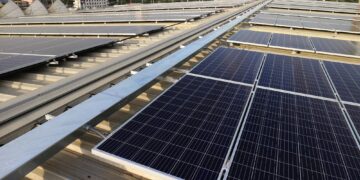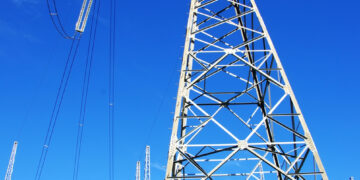Egypt’s head of Electricity and Renewable Energy, Mahmoud Essmat, has convened with the supervisory team of the robust 3,000-megawatt electric interlinking initiative with Saudi Arabia. This strategic move is designed to mitigate power interruptions, elevate grid dependability, refine the quality of power delivery, and cater to the escalating demand for electricity.
In his dialogue, Essmat underscored a comprehensive blueprint aimed at enhancing the efficacy of the nation’s energy framework. This encompasses augmenting the performance of power plants, curtailing fuel usage, and tackling the deficits incurred by distribution entities. The impetus is high for the swift progression of this interconnection with Saudi Arabia, with further discussions with Saudi representatives slated to occur shortly, aiming to cement the project’s particulars prior to the ensuing summer.
The endeavor, estimated at a worth of $1.8 billion, is progressing steadily, with 60% of the work already accomplished. Its inauguration is scheduled to commence in phases beginning July 2025. This extensive network, which involves the deployment of aerial cables and subaqueous lines covering 1,350 kilometers, will fuse the electrical grids of both nations.
Key figures such as project directors, consultants, and building contractors took part in the meeting, alongside Sabah Mashali, the Deputy Minister, and Salah Ezzat, the interim head of the Egyptian Electricity Transmission Company.
The initiative is set to exploit the disparate peak load periods of both networks to optimize production capabilities while lessening fuel utilization. It marks a pivotal leap toward the creation of a regional grid interlinkage, fostering enhanced stability and reliability in the electricity supply shared between Egypt and Saudi Arabia, and harbors the prospect of economic and developmental gains.
The construction blueprint includes three pivotal high-voltage transformer substations: one situated in eastern Saudi Arabia, another in Tabuk, and a third in Badr City near Cairo. These pivotal nodes will be interconnected through a mixture of terrestrial lines and subsea cables. The project’s construction is under the stewardship of a consortium comprising three multinational corporations.
This interconnection not only strengthens domestic energy provisions but also paves the way for prospective electricity exports to Asian and European markets. Egypt’s current power generation stands at roughly 58,000 megawatts per day, which surpasses its daily consumption needs of 33,000 megawatts, indicating a potential for future power-sharing endeavors.









